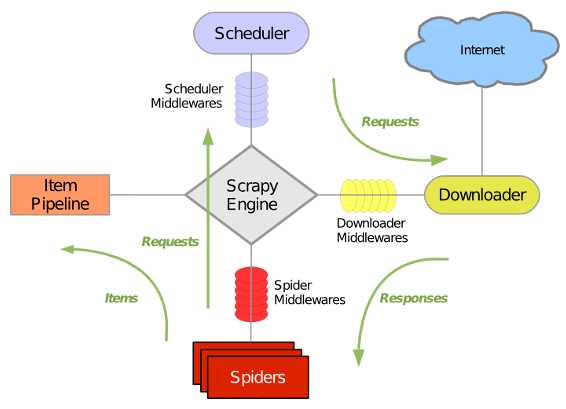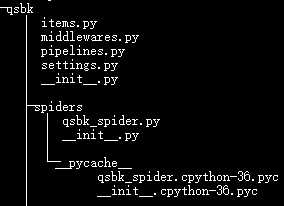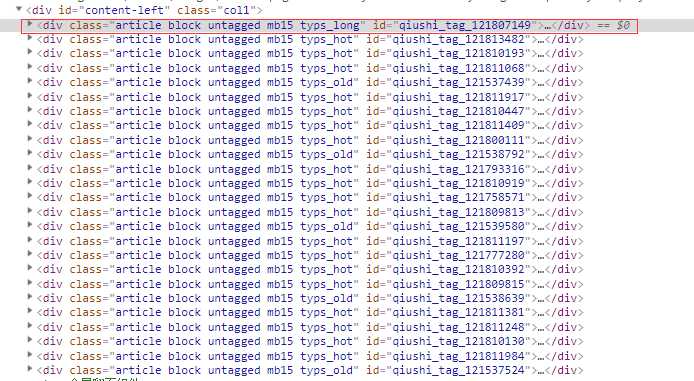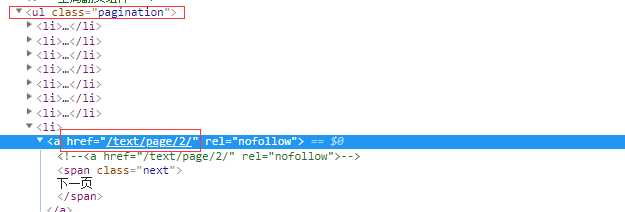标签:退出 之间 ack document 优先队列 import cond content http
其官网是这样简述的,“A Fast & Powerful Scraping &Crawling Framework ”, 并且其底层以twisted作为网络架构( Python实现的基于事件驱动的网络引擎框架),所以爬取效率及性能出色。
定义·:Scrapy是一个为了爬取网站数据,提取结构性数据而编写的应用框架。 其可以应用在数据挖掘,信息处理或存储历史数据等一系列的程序中。其最初是为了页面抓取 (更确切来说, 网络抓取 )所设计的, 也可以应用在获取API所返回的数据(例如 Amazon Associates Web Services ) 或者通用的网络爬虫。Scrapy用途广泛,可以用于数据挖掘、监测和自动化测试

引擎 (Scrapy Engine):用来处理整个系统的数据流,触发事物(框架核心)
调度器 (Scheduler):用来接收引擎发送的请求,压入请求队列中,并在引擎再次请求的时候返回,可以想象成一个url(待爬取网页的url)的优先队列,由他决定下一个要抓取的网址是什么,同时去除重复的网址
下载器 (Downloader):顾名思义,用于下载网页代码,并将结果返回给spider
爬虫 (Spiders): 蜘蛛呢,就是执行者,用于解析网页中的信息,即实体(Item)
项目管 道(Pipeline): 负责处理爬虫从网页中抽取的实体,主要功能是持久化实体,验证实体的有效性,清除不需要的信息。当爬虫被解析后,将被发送至项目管道,并经过几个特定次序来处理数据
下载中间件 (Downloader Middlewares): 位于Engine及Spider之间的框架,主要工作是处理scrapy engine与Downloader之间的请求及响应
爬虫中间件 (Spider Middlewares): 位于Engine及Spider之间的框架,主要工作是处理scrapy engine与spider之间的响应输入及请求输出
调度中间件 (Schedule Middlewares): 介于scrapy engine及scheduler之间的中间件,处理从scrapy engine发送到scheduler的请求响应
# 这里我们用conda创建一个名为rawling_py36的虚拟环境 conda create --name crawling_py36 python=3.6 # 进入环境 activate crawling_py36 # 安装scrapy conda install scrapy # 退出当前环境(windows) deactivate
说明:也可以使用pip install scrapy命令进行安装, 但是在windows平台下, scrapy依赖pypiwin32模块,在执行pip install scrapy命令前,请先执行pip install pypiwin32
a. 新建项目
# 新建一个文件夹 并进入文件夹 mkdir spider_projects cd ./spider_projects # 进入虚拟环境 activate crawling_py36 # 新建爬虫项目, scrapy startproject qsbk #提示成功
b.新建爬虫

其域名为qiushibaike.com,我们这里根据域名新建一个spider
# 一定要在项目文件夹下
cd qsbk
scrapy genspider qsbk_spider qiushibaike.com
成功之后,其文件树结构为:

c. 分析网页结构(https://www.qiushibaike.com/text/)

那么红圈里的div就是当前页的所有段子信息,我们使用xpath进行解析,那么每一个段子的xpath语法为 //div[@id=‘content-left‘]/div[contains(@class,‘article‘)]

提取下一页的地址的xpath语法为 //ul[@class=‘pagination‘]/li[last()]/a/@href

d. 开始
爬虫配置 (settings.py):
1 # Obey robots.txt rules 2 ROBOTSTXT_OBEY = False 3 4 # Override the default request headers: 5 DEFAULT_REQUEST_HEADERS = { 6 ‘Accept‘: ‘text/html,application/xhtml+xml,application/xml;q=0.9,*/*;q=0.8‘, 7 ‘Accept-Language‘: ‘en‘, 8 ‘User-Agent‘: ‘Mozilla/5.0 (Windows NT 10.0; WOW64) AppleWebKit/537.36 (KHTML, like Gecko) Chrome/72.0.3626.119 Safari/537.36‘, 9 } 10 11 12 # Configure item pipelines 13 # See https://doc.scrapy.org/en/latest/topics/item-pipeline.html 14 ITEM_PIPELINES = { 15 ‘qsbk.pipelines.QsbkPipeline‘: 300, 16 }
解析数据(qsbk_spider.py):
1 # -*- coding: utf-8 -*- 2 import scrapy 3 from ..items import QsbkItem 4 5 6 class QsbkSpiderSpider(scrapy.Spider): 7 name = ‘qsbk_spider‘ 8 allowed_domains = [‘qiushibaike.com‘] 9 start_urls = [‘https://www.qiushibaike.com/text/page/1/‘] 10 base_domain = "https://www.qiushibaike.com" 11 12 def parse(self, response): 13 # 获取所有段子信息 14 texts = response.xpath("//div[@id=‘content-left‘]/div[contains(@class, ‘article‘)]") 15 # 提取单个段子信息 16 for text in texts: 17 author_info = text.xpath("./div[contains(@class,‘author‘)]") 18 head_img = ‘http:‘ + author_info.xpath(".//img/@src").get().strip() 19 author_name = author_info.xpath(".//h2/text()").get().strip() 20 content_list = text.xpath(".//div[@class=‘content‘]/span/text()").getall() 21 content = ‘‘.join(content_list).strip() 22 23 article_item = QsbkItem(author_name=author_name, head_img=head_img, content=content) 24 25 yield article_item 26 27 # 下一页的地址 28 next_page_url = response.xpath("//ul[@class=‘pagination‘]/li[last()]/a/@href").get() 29 30 if next_page_url: 31 yield scrapy.Request(url=self.base_domain+next_page_url, callback=self.parse) 32 else: 33 return
结构化实体(items.py):
# -*- coding: utf-8 -*- # Define here the models for your scraped items # # See documentation in: # https://doc.scrapy.org/en/latest/topics/items.html import scrapy class QsbkItem(scrapy.Item): # define the fields for your item here like: # name = scrapy.Field() author_name = scrapy.Field() head_img = scrapy.Field() content = scrapy.Field()
持久化数据(pipelines.py):
1 # -*- coding: utf-8 -*- 2 3 # Define your item pipelines here 4 # 5 # Don‘t forget to add your pipeline to the ITEM_PIPELINES setting 6 # See: https://doc.scrapy.org/en/latest/topics/item-pipeline.html 7 8 # import json 9 # class QsbkPipeline(object): 10 # 11 # def open_spider(self, spider): 12 # print(‘start crawling....‘) 13 # self.file = open(‘qsbk.json‘,‘w‘ , encoding=‘utf-8‘) 14 # 15 # def process_item(self, item, spider): 16 # item_json = json.dumps(dict(item), ensure_ascii=False) 17 # self.file.write(item_json+‘\n‘) 18 # return item 19 # 20 # def close_spider(self, spider): 21 # self.file.close() 22 # print(‘stop crawling.....‘) 23 24 # 一次性写入 25 # from scrapy.exporters import JsonItemExporter, JsonLinesItemExporter 26 # class QsbkPipeline(object): 27 # 28 # def open_spider(self, spider): 29 # print(‘start crawling....‘) 30 # self.file = open(‘qsbk.json‘, ‘wb‘) 31 # self.exporter = JsonItemExporter(self.file, ensure_ascii=False) 32 # self.exporter.start_exporting() 33 # 34 # def process_item(self, item, spider): 35 # self.exporter.export_item(item) 36 # 37 # def close_spider(self, spider): 38 # self.exporter.finish_exporting() 39 # self.file.close() 40 # print(‘stop crawling.....‘) 41 42 # 分行写入,(在数据量很大的时候推荐使用) 43 from scrapy.exporters import JsonLinesItemExporter 44 class QsbkPipeline(object): 45 46 def open_spider(self, spider): 47 print(‘start crawling....‘) 48 self.file = open(‘qsbk.json‘, ‘wb‘) 49 self.exporter = JsonLinesItemExporter(self.file, ensure_ascii=False) 50 51 def process_item(self, item, spider): 52 self.exporter.export_item(item) 53 return item 54 55 def close_spider(self, spider): 56 self.file.close() 57 print(‘stop crawling.....‘)
说明: 为了避免每次爬取使用命令行,可以在项目根目录下新建 run.py 代替命令行执行, 而scrapy也同样提供了执行cmd命令这一模块
启动爬虫(run.py)
1 from scrapy import cmdline 2 3 cmdline.execute("scrapy crawl qsbk_spider".split())
e.爬取结束(qsbk.json)

标签:退出 之间 ack document 优先队列 import cond content http
原文地址:https://www.cnblogs.com/kisun168/p/10865192.html